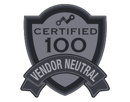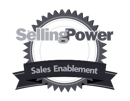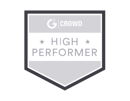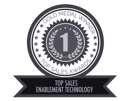Win more with old-fashioned, in-person sales meetings
Despite reports to the contrary, the old-fashioned, in-person sales meeting isn’t dead.
Selling against the status quo
You’re probably all too well aware of the statistic that the majority of apparently well-qualified complex B2B buying journeys end with the potential customer either deciding to do nothing or to change nothing.
Can a unique Way of Selling win more deals?
My wife and I love a little restaurant near our home. They have the absolute best poke bowl we’ve eaten anywhere.
How all those trucks on the road can help you stop discounting
We've been doing a lot of traveling this summer to baseball tournaments (20-second video showing how one playoff game ended), college baseball showcases and back. During these travels, one thing has become abundantly clear. Trucks and construction. Lots of trucks. Lots of construction. Lots of congestion on the roads because of all those tractor trailers.
5 questions from psychology you need to ask your sales team
“There are five questions that determine whether a person will do something or not. These five questions have been heavily investigated at the individual psychological level, the psychobiological level, all the way down to cells and molecules. If you know the answers to these questions, you know whether the person will do something or not.”
The golden egg(s) nestling in your basket
From quite early on, in our sales careers, we are encouraged to explore every sales opportunity that presents itself – in fact, in some companies, they are brainwashed into believing that “all business is good business.”
External Exposure
Podcasts
- Tony Morris interviews George Brontén on the podcast "Confessions of a serial seller"
- Deadly Assumptions that are Killing your B2B Sales - Outside Sales Talk with George Brontén
- SaaS-Story in the Making: Designing a Buyer-focused Sales Process - with George Brontén
- Tibor Shanto, Sales Scrum, interviews George Brontén
- Andy Paul, Sales Enablement: Stop Killing Deals, with George Brontén
- Jonathan Farrington interviews George Brontén about Stop Killing Deals [the book]
- Sales Futurists: The Future of Professional Selling - What Will the New "Normal" Be Like?
- Sales Pipeline Radio: You’re Killing Sales Deals Without Knowing It: George Will Help You Fix It
- Penta Marketing Interviews George Bronten in the Podcast Emerging Stronger™
- Integrity Solutions: Unmasking and defeating deadly assumptions that plague sales organizations
Videos & interviews
- The Top 5 Ways You are Killing Your Sales - Brutal Truth Sales Podcast
- Phil Gerbyshak interviews George Brontén about the Stop Killing Deals book release
- Membrain's Founding Story
- Sales Tools - the Good, the Bad, and the Ugly
- Here's what to consider when adding or switching your CRM
- Productivity, efficiency, effectiveness – what’s what and where to focus?
- How to Build a Sales Process That Drives Successful Behaviors
- Can Checklists Stop Deals from Dying and Help Consistently Achieve Quota?
Guest Posts
- G2Crowd: "How to Get the Most out of Your Sales Technology Investment"
- Saleslounge: Varför dina stjärnsäljare blir dåliga säljchefer
- Saleslounge: Vad är komplex försäljning?
- Vainu: Så blir du en mästare på komplex B2B-försäljning
- CSO Insights: Sales Process Interview, Part 2
- CSO Insights: Sales Process Interview, Part 1
- Richardson: 3 Pitfalls that Still Make Sales Teams Waste Time and Lower Sales Effectiveness
- Smart Selling Tools: How to Stop Fighting the Monster of Sales Technology Complexity









